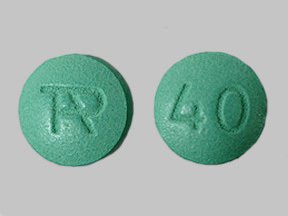Uloric can cause Stevens-Johnson syndrome and topical epidermal necrolysis, both of which are life-threatening skin diseases. Even though medical studies had reported the possibility as early as 2010, the warning label for Uloric did not mention either condition until 2018. People who have taken Uloric and who have developed Stevens-Johnson syndrome or topical epidermal necrolysis have filed lawsuits against Uloric’s U.S. manufacturer, Takeda Pharmaceutical Company.
- 1. What is Uloric?
- 2. What are Stevens-Johnson syndrome and topical epidermal necrolysis?
- 3. Studies show Uloric can cause Stevens-Johnson syndrome and topical epidermal necrolysis
- 4. FDA adds allergic reactions to Uloric’s warning label
- 5. Uloric lawsuits for Stevens-Johnson syndrome and topical epidermal necrolysis

1. What is Uloric?
Uloric is a pill-based prescription medication for gout, a form of arthritis caused by the accumulation of uric acid in joints and tendons. By lowering the level of uric acid in the blood, Uloric prevents these buildups and the painful decrease in mobility that they create.
However, Uloric has been known to cause some severe side effects, including:
- Gout flares,
- Liver problems,
- Heart attacks,
- Strokes,
- Unstable anginas, and
- Severe allergic reactions like Stevens-Johnson syndrome and topical epidermal necrolysis.
Uloric was first approved by the U.S. Food and Drug Administration (FDA) in 2009.1 It was meant to replace the existing medication for gout, Zyloprim, which had been on the market since 1966.
2. What are Stevens-Johnson syndrome and topical epidermal necrolysis?
Among the severe side effects that Uloric can cause are two rare and potentially life-threatening allergic reactions:
- Stevens-Johnson syndrome, and
- Topical epidermal necrolysis.
Both of these conditions are skin disorders that compromise a victim’s mucous membranes. They take the form of a rash that spreads, blisters, and kills the top layer of the victim’s skin.
When less than 10% of a victim’s skin is covered by the rash, it is diagnosed as Stevens-Johnson syndrome. When more than 30% of the skin is covered by the rash, it becomes topical epidermal necrolysis. When there is 10-30% coverage, doctors diagnose it in-between the two conditions.
Whether the diagnosis is Stevens-Johnson syndrome or topical epidermal necrolysis, the prognosis can be dire as either condition can cause a variety of severe medical complications, including:
- Sepsis,
- Pneumonia,
- Dehydration, and
- Organ failure.
The mortality rate for people with Stevens-Johnson syndrome is around 5%. When the condition has evolved into topical epidermal necrolysis, it increases to nearly 40%.
2.1 Symptoms of Stevens-Johnson syndrome and topical epidermal necrolysis
The early symptoms of Stevens-Johnson syndrome and topical epidermal necrolysis are innocuous, and sound like a standard cold or flu:
- Fever,
- Fatigue,
- Cough,
- Sore throat, and
- Burning feeling around the eyes.
After a few days, victims of Stevens-Johnson syndrome and topical epidermal necrolysis begin to develop a rash. This rash is red or even purple. It spreads and blisters rapidly.
Additionally, victims of these allergic reactions can experience the following symptoms:
- Widespread skin pain, and
- Blisters on the mucous membranes of the eyes, mouth, nose, and genitals.
These blisters kill the victim’s skin, making the victim vulnerable to other infections that can create serious complications. The dead skin sheds after a few days.

3. Studies show Uloric can cause Stevens-Johnson syndrome and topical epidermal necrolysis
Almost as soon as Uloric was prescribed to treat gout, medical studies found that it could cause life-threatening skin conditions and allergic reactions like Stevens-Johnson syndrome or topical epidermal necrolysis.
As early as June, 2010 – little more than a year after Uloric was approved for use in the U.S. – the FDA was receiving reports that Uloric could cause Stevens-Johnson syndrome or topical epidermal necrolysis.2
A more damning report, though, came in 2014. A trial in France revealed that between 2 and 4% of Uloric patients developed a minor skin reaction, while 0.1% to 0.4% developed severe reactions like Stevens-Johnson syndrome or topical epidermal necrolysis.3 While this percentage seems small, Stevens-Johnson syndrome or topical epidermal necrolysis, together, only affect an estimated 1 or 2 people per million every year.
4. FDA adds allergic reactions to Uloric’s warning label
It was not until February, 2018, though, that the FDA updated Uloric’s warning label to include the heightened risk for developing Stevens-Johnson syndrome or topical epidermal necrolysis.4
Because of this delay, thousands of people taking Uloric were left uninformed about the risks they were facing.
5. Uloric lawsuits for Stevens-Johnson syndrome and topical epidermal necrolysis
Thousands of lawsuits have been filed against Takeda Pharmaceutical Company for injuries caused by Uloric. Many of these stem from Stevens-Johnson syndrome or topical epidermal necrolysis.
These lawsuits claim that Takeda knew or should have known of the dangers posed by Uloric, but failed to warn doctors and patients of those risks. Without information about the dangers they could face by taking Uloric, this left patients unable to prevent a serious medical complication like Stevens-Johnson syndrome or topical epidermal necrolysis. The lawsuits seek compensation for all of the losses that stem from the injuries cause by Uloric, including compensation for:
- Medical bills,
- Anticipated future medical expenses,
- Lost wages,
- Missed business opportunities,
- Diminished earning capacity,
- Pain and suffering, and
- Loss of consortium suffered by the victim’s family.
If the Stevens-Johnson syndrome or topical epidermal necrolysis proved to be fatal, these lawsuits take the form of wrongful death claims that are brought on behalf of the victim by their family.

The defective drug lawyers at the Shouse Law Office strive to legally represent victims who have taken Uloric and developed Stevens-Johnson syndrome or topical epidermal necrolysis. Call them at 855-LAWFIRM to invoke your rights before the statute of limitations has run out on your potential Uloric lawsuit.
References:
- FDA Approval Letter for Uloric – 2009.
- See M. Alexander Otto, “Febuxostat Tied to Hypersensitivity Reactions: Reports include two cases of Stevens-Johnson syndrome,” MDedge (June 15, 2010).
- Bardin T, et al., “Gouty Patients with History of Adverse Reaction to Allopurinol Are Not at Higher Risk of Reaction to Febuxostat,” American College of Rheumatology Annual Meeting (2014).
- FDA Warning Label for Uloric – 2018.
